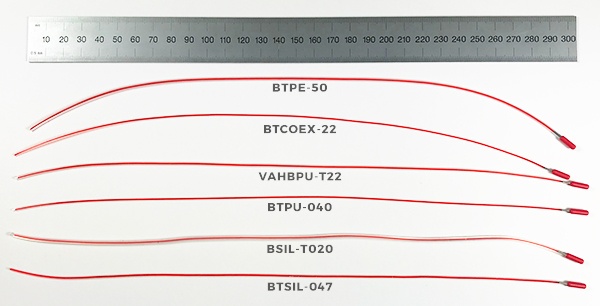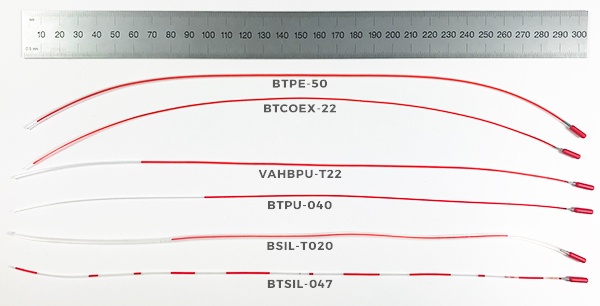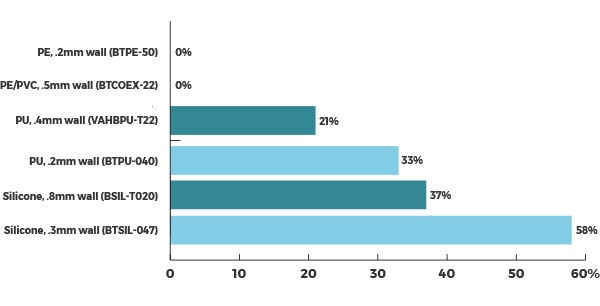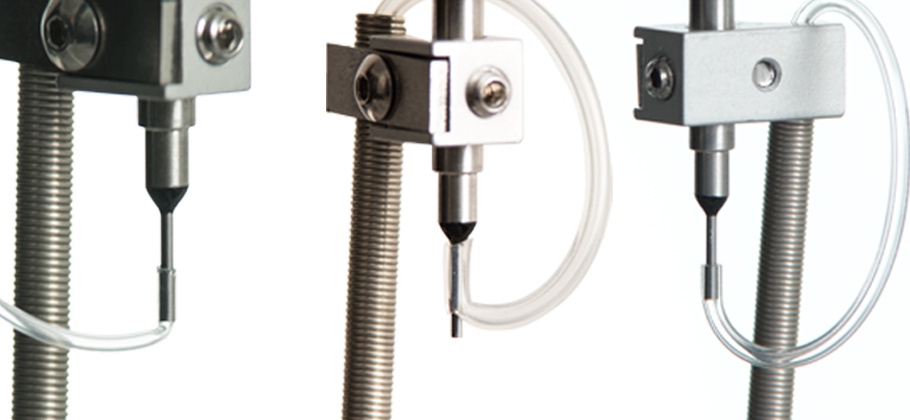The ability for gasses to pass through research tubing varies dramatically depending on the tubing material. This can have a meaningful impact on laboratory animal infusion or sampling studies. For example, when a rodent has a simple exteriorized catheter filled with lock solution and closed with a plug, the lock solution can evaporate, pulling blood into the tip of the catheter which can then clot.
We ran a simple study to quantify the permeability of some of our most commonly used tubing. We filled 30cm segments with water and a food coloring and sealed one end with one of our PinPorts™. We let the tubing segments sit at room temperature for 24 hours and then measured how much fluid remained in the tube.
At Start

After 24 Hours

Results
% Evaporation over 24 Hours

Silicone is the most permeable material and should not be used as an exteriorized catheter unless fluid is continuously flowing through it. Polyurethane, which is the most common rodent catheter material due to its biocompatibility, is also quite permeable. This may be one of the main reasons that patency is so much better1 when a completely subcutaneous PU catheter is combined with a Vascular Access Button™ as compared to a simple exteriorized catheter. Polyethylene and coextruded PE/PVC, showed no evaporation other than at the open tip. PE is generally not considered a good material inside vessels due to its stiffness, but is good for external infusion tubing if permeability is a concern.
1Mallett S, Murray T, Karicheti V et al, Charles River Laboratories, “Patency of Jugular Vein Catheters in CD-1® IGS Mice: Evaluation of Three Catheter Maintenance Schedules in Standardly Externalized Catheter and Transcutaneous Buttons,” AALAS poster #P65, October 2017. See Poster
